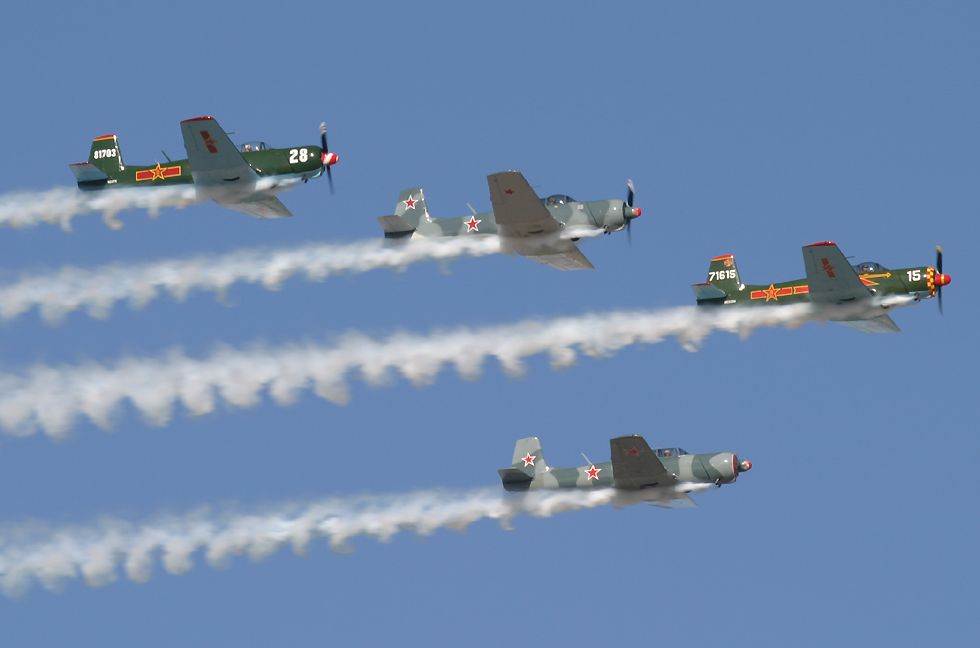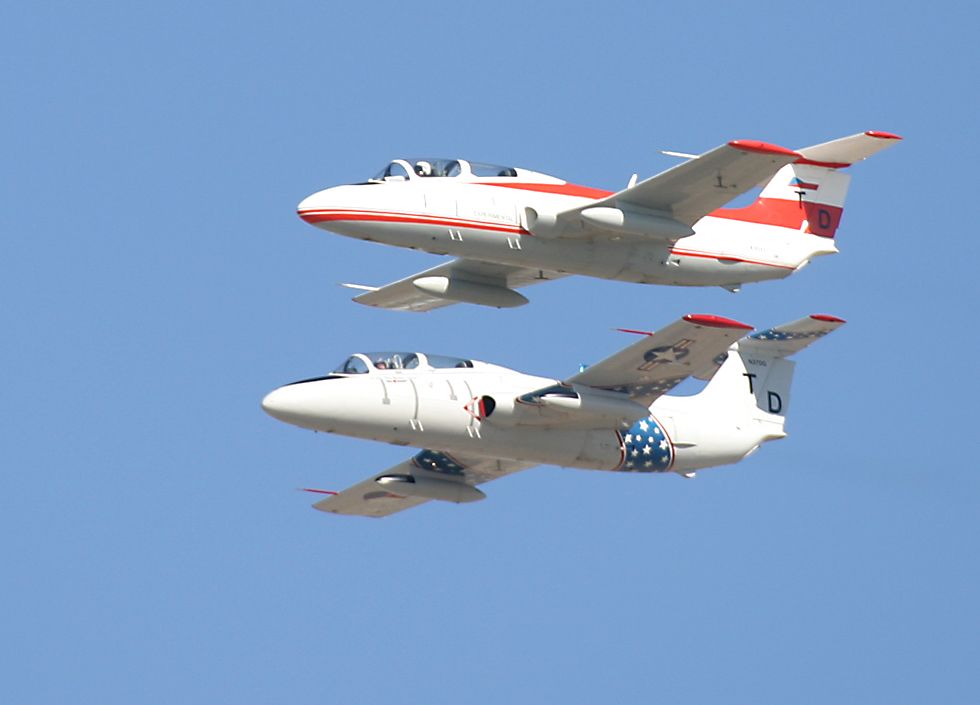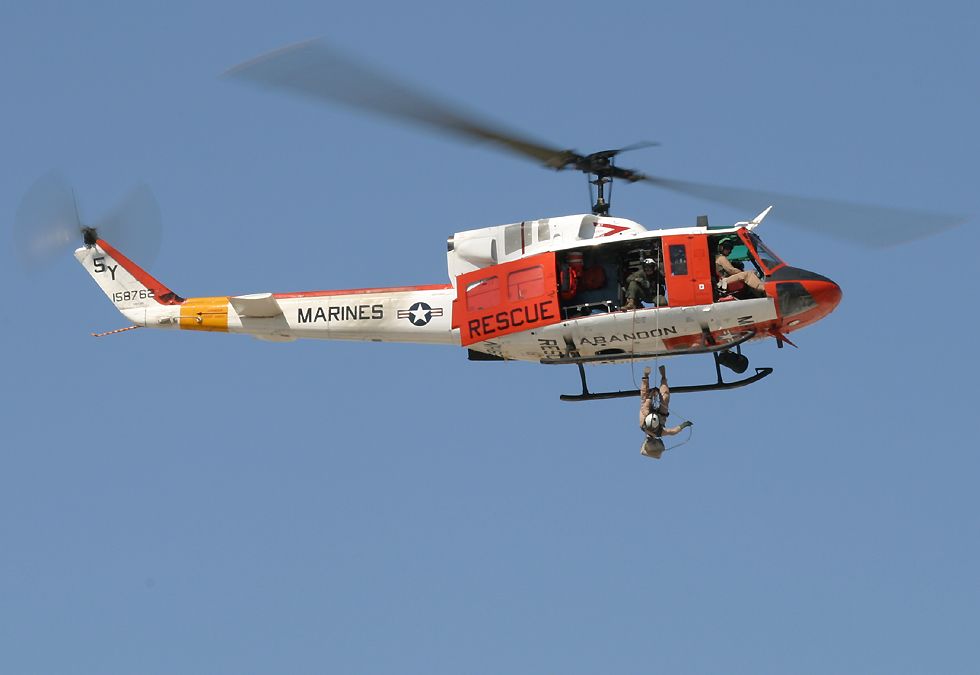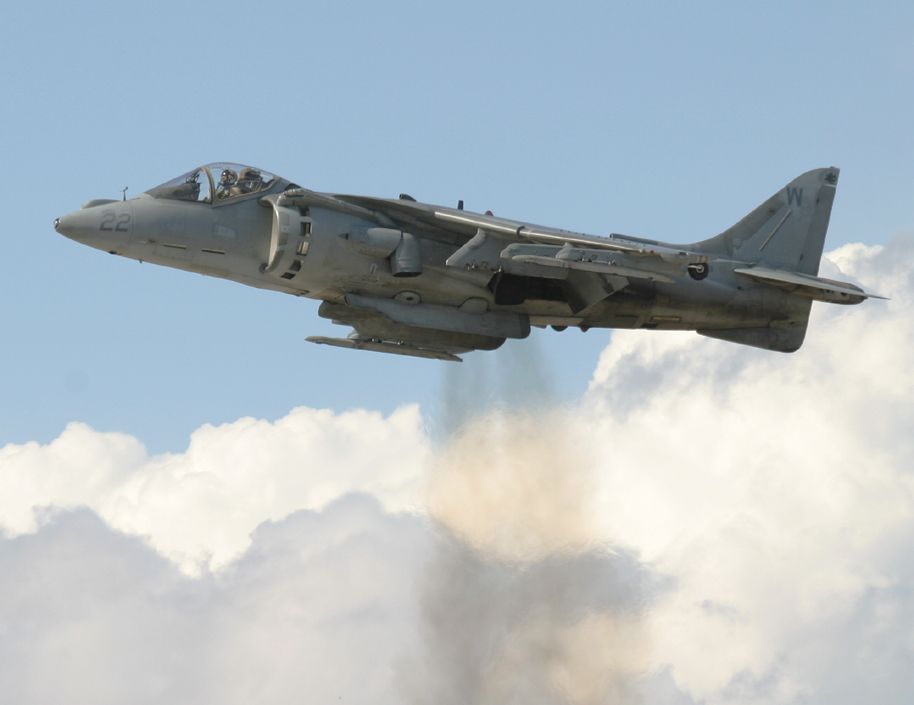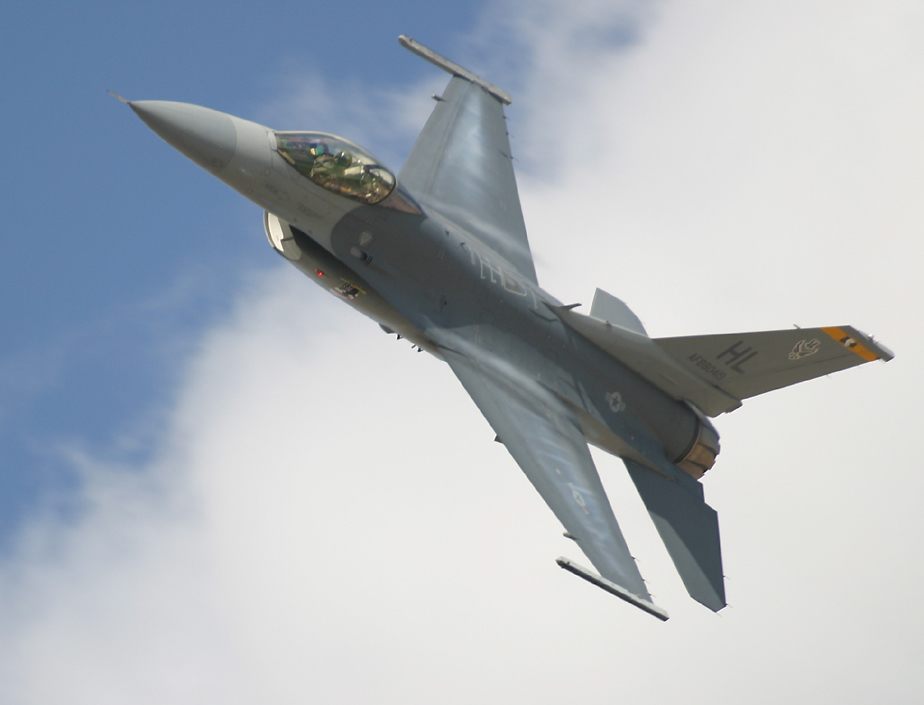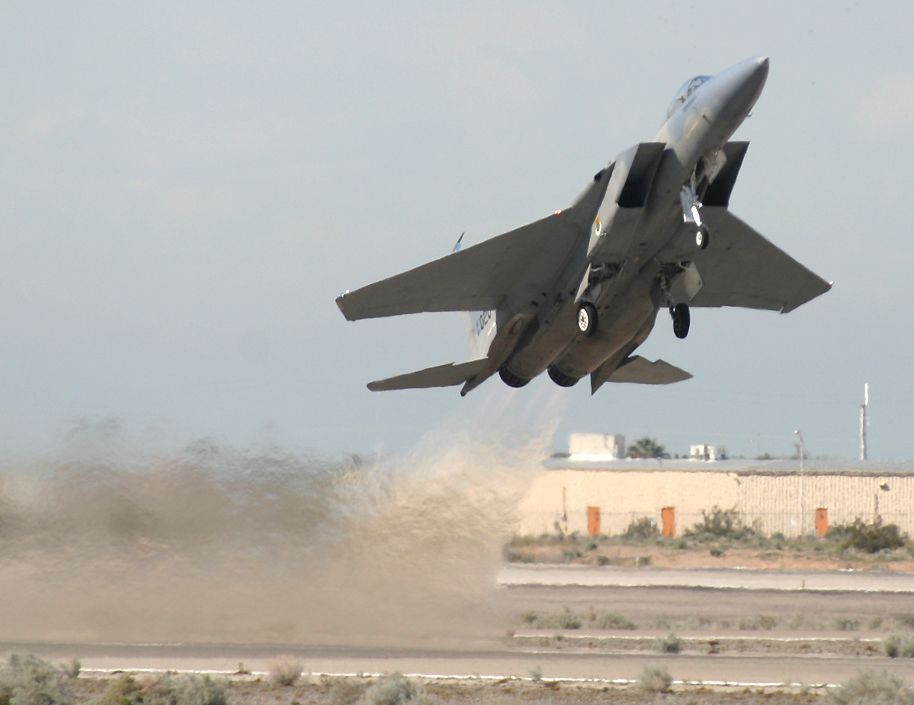Highlights of the 2005 Yuma Airshow
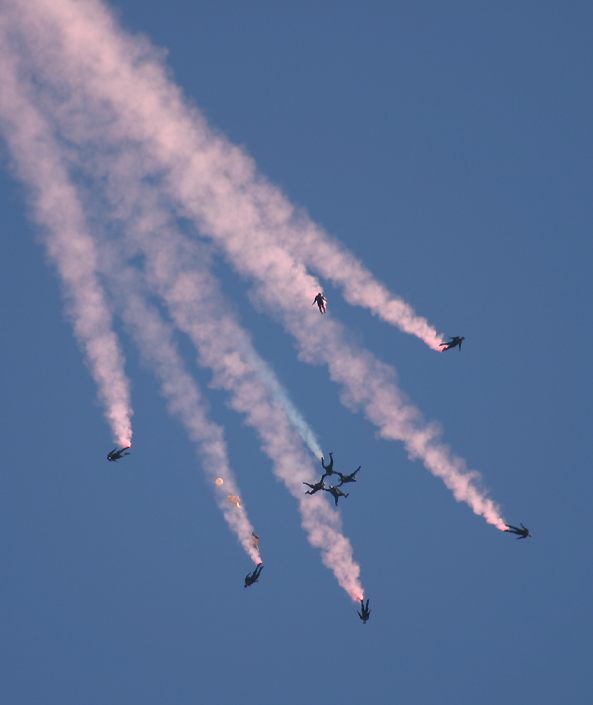
The flying display at Yuma actually started with some falling, as the US Army Golden Knights parachute team jumped out of their aircraft, formed up into a pattern and then broke apart so they could deploy their parachutes. The crowd was then treated to a demonstration of each one coming in to land at the same place at show center. |
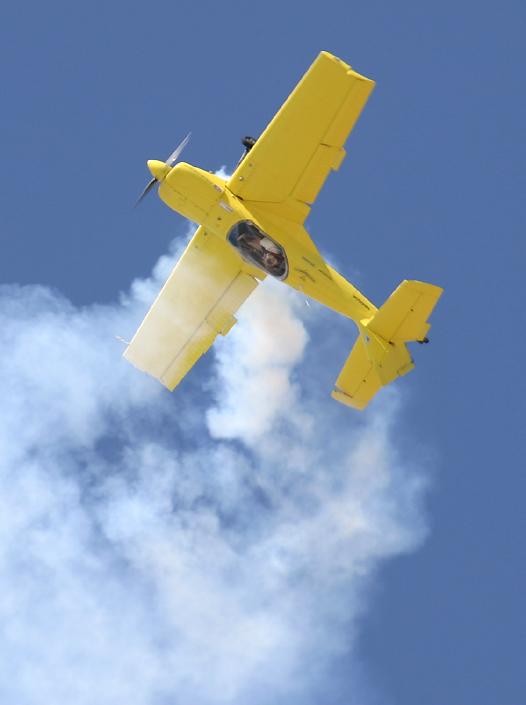
Almost all American airshows, even the military ones, include performances by civilian aerobatic aircraft. I've often wondered what Joe Public thinks of these displays, especially if there are three or four of them, but there are certainly maneuvers which can be appreciated by everyone, even if they don't know anything about flying. |
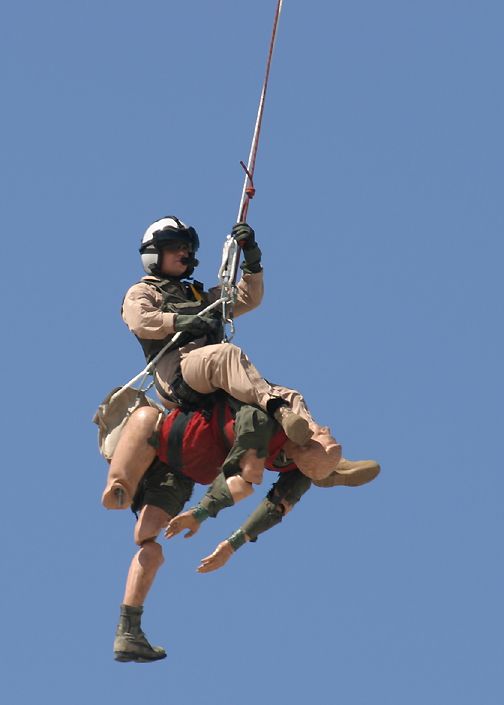
I'm sure that most people who are in need of these guys' services are very grateful to see them coming, but they might have second thoughts if they knew how they were about to be treated! Heck, I bet these guys don't even buy you flowers the next morning! |
|
Of course it's the harrier's vertical and short takeoff and landing (VSTOL) ability which makes it so interesting to the public and so attractive to the marine corps. It allows them to operate it from the small marine corp amphibious landing carriers which are also used for helicopters. Once on shore, the harrier can operate from small, poorly-prepared forward bases which are inaccessible to more conventional aircraft. It's intended to eventually replace the harriers with the VSTOL version of the joint strike fighter, which is supposed to be a one-size-fits-all solution for the air force, navy and marines. |
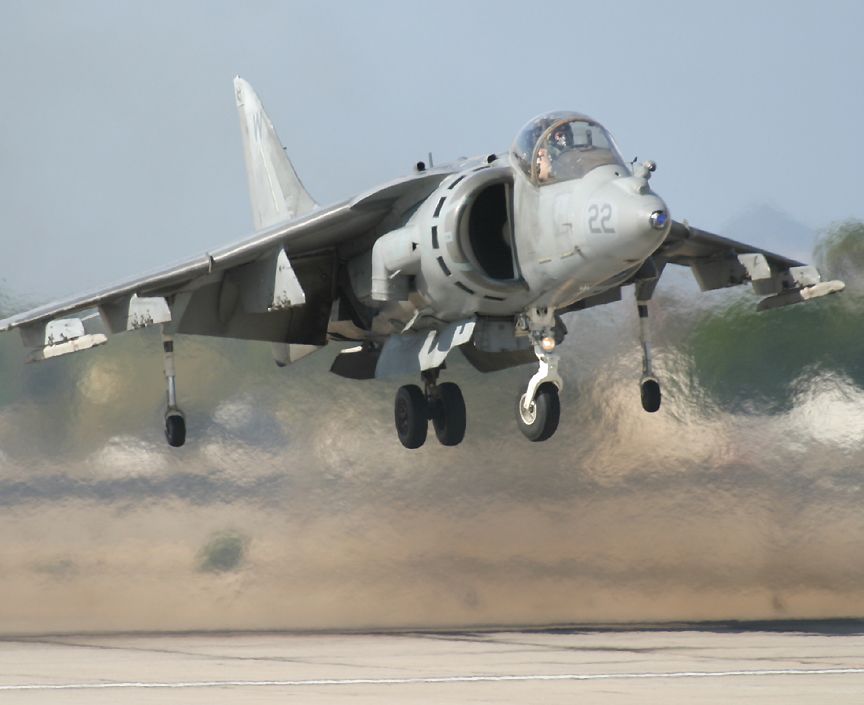
|
|
However, as you can see this is the single seat air superiority version of the Eagle, and he's out to show that it can put on as spectacular a display as the Fighting Falcon! |
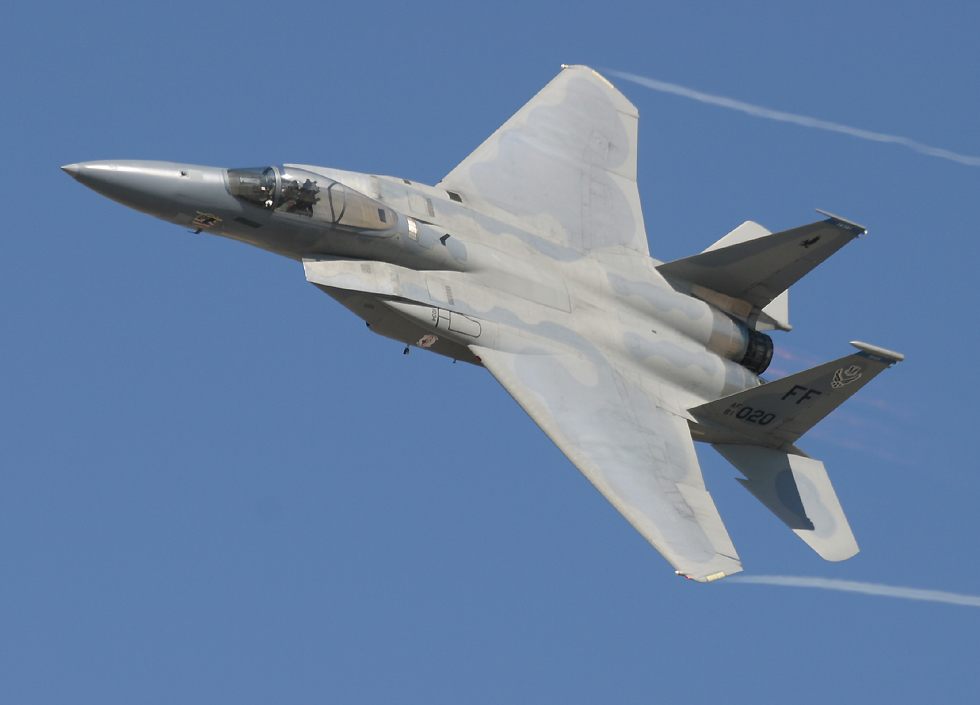 |
